




-
Application
- Industry
- Heating industry
- Individual solutions
- Law regulations
- Certification
- Research and development
- Public perception
- Investment map
-
Transport
- Hydrogen buses
- Hydrogen trains
- Special vehicles
- Law regulations
- Certification
- Research and Development
- Public perception
- Investment map
-
Production
- Technology
- Green hydrogen from Renewable Energy Sources
- Grey hydrogen
- Hydrogen production from biomass
- Law regulations
- Certification
- Research and development
- Public perception
- Investment map
-
Transmission, Storage



Cookies
Informujemy, iż w celu optymalizacji treści dostępnych w naszym serwisie, dostosowania ich do Państwa indywidualnych potrzeb korzystamy z informacji zapisanych za pomocą plików cookies na urządzeniach końcowych użytkowników. Pliki cookies użytkownik może kontrolować za pomocą ustawień swojej przeglądarki internetowej. Dalsze korzystanie z naszego serwisu internetowego, bez zmiany ustawień przeglądarki internetowej oznacza, iż użytkownik akceptuje stosowanie plików cookies. Czytaj więcej Polityka prywatności
Application
Polish hydrogen cell - what are the perspectives?
One of the most promising areas for the use of hydrogen is in transport. Existing solutions, such as battery technology, have their limitations, especially in the case of heavy transport, long-distance buses and trains. Hydrogen can be used in transport, but also, for example, in residential buildings through the use of fuel cells.What is a fuel cell?
It is a device which converts the chemical energy of hydrogen and oxidiser directly into electrical energy. There is no classical combustion process, and the conversion of chemical energy into electricity avoids the emission of harmful substances such as hydrocarbons, carbon monoxide or nitrogen oxides. The reaction involves hydrogen with a high level of purity (99.999%), and an oxidant in the form of atmospheric air.
A fuel cell consists of two electrodes (an anode and a cathode), which are separated by an electrolyte in solid or liquid form. Most often a polymer membrane plays this role. Hydrogen fed to the anode is broken down into protons and electrons in a catalytic reaction, and then the protons penetrate through the membrane to the cathode. From the oxygen-containing air fed to the cathode, oxide anions are formed by catalytic reactions. The hydrogen cations then react with the oxide anions. The potential difference between the anode and cathode causes an electric current to flow, and additional reaction results are heat and water.
Who produces fuel cells?
The world's leading fuel cell manufacturer is Canadian company Ballard Power, whose order book currently stands at more than $113 million. Ballard's latest product – FCmove™-HD+ module, is designed for buses and large trucks. This is the eighth generation of Ballard's fuel cell dedicated to heavy-duty vehicles. The module generates 100 kW of power and can be installed either in the engine compartment or on the roof of the vehicle.
Ballard claims that the new cell is 40% smaller, 30% lighter and has 50% fewer parts than the previous generation, which will make vehicles equipped with it cheaper to maintain and have a longer range. Ballard cells have a modular design, so they can be bundled together and used, for example, in trains that require even more power.

Polish fuel cells
Building a hydrogen economy also requires investment in Poland's own technologies. Research on low-temperature fuel cells is also already underway in Poland. The Łukasiewicz Institute of Industrial Chemistry is preparing a prototype of a fuel cell stack as part of a consortium aiming to produce hydrogen from the waste of the sugar industry waste. The project has received funding of PLN 18.5 million from the NCBR Biostrateg programme.
Can the Polish cell compete with devices available on the market? For the time being there is a real gap between us and the world leader. The Polish prototype is to be used to power small devices with power output of a few hundred watts, while according to the Institute the experience will be used in the future to work on larger cells for vehicles.
– This will require the development of bipolar plates with a larger surface area and a changed geometry, and provided that appropriate MEA catalytic sets are obtained - said Łukasiewicz-IChP's deputy director for research, Engineer Ewa Śmigiera, D.Sc, quoted by "Rzeczpospolita”
Meanwhile, Ballard Power announced in November 2021 the acquisition of Arcola, a British engineering company specialising in the integration of fuel cells in vehicles. The deal will be worth around $40 million. This shows how huge the market potential is, also for the Polish scientific and business communities.
Redakcja





